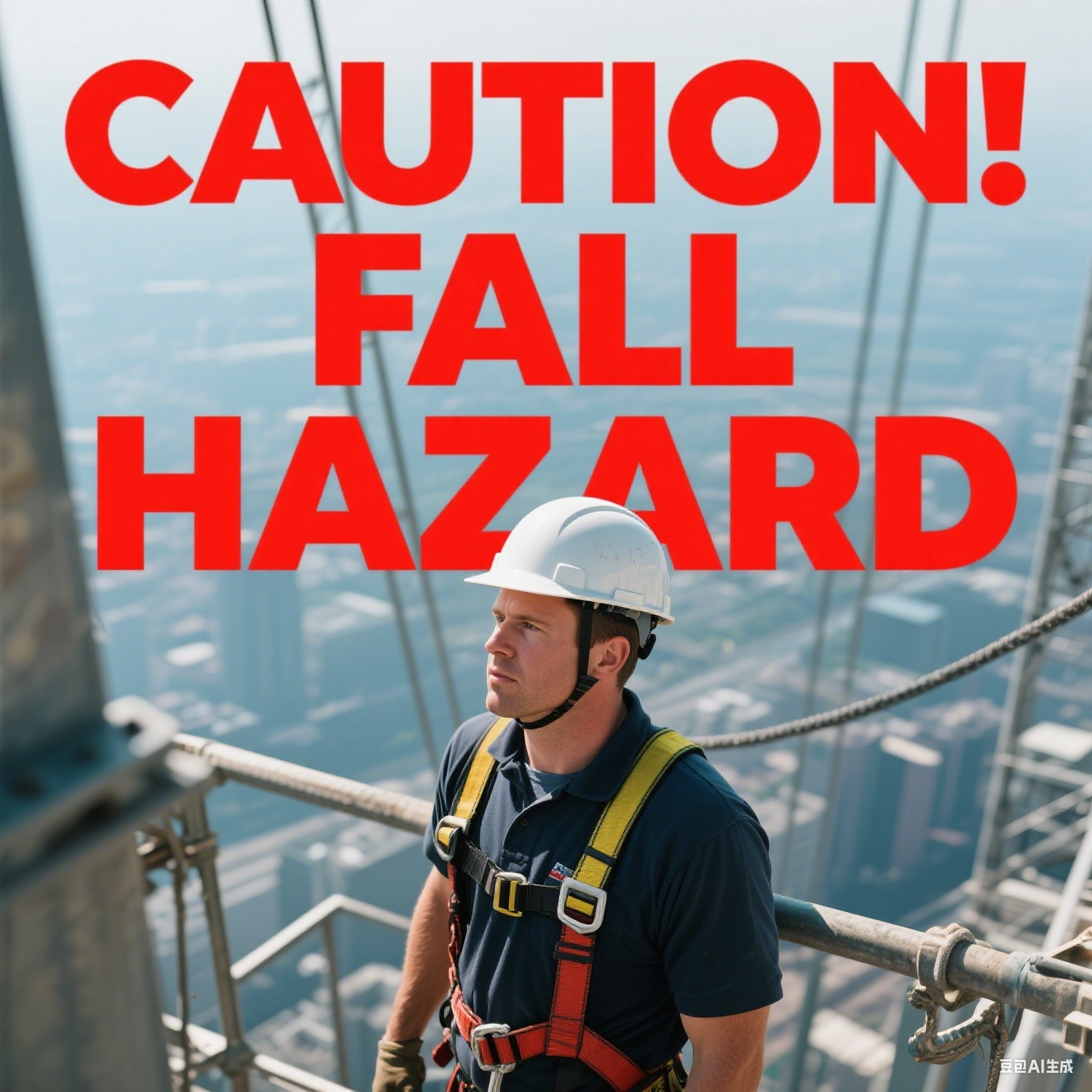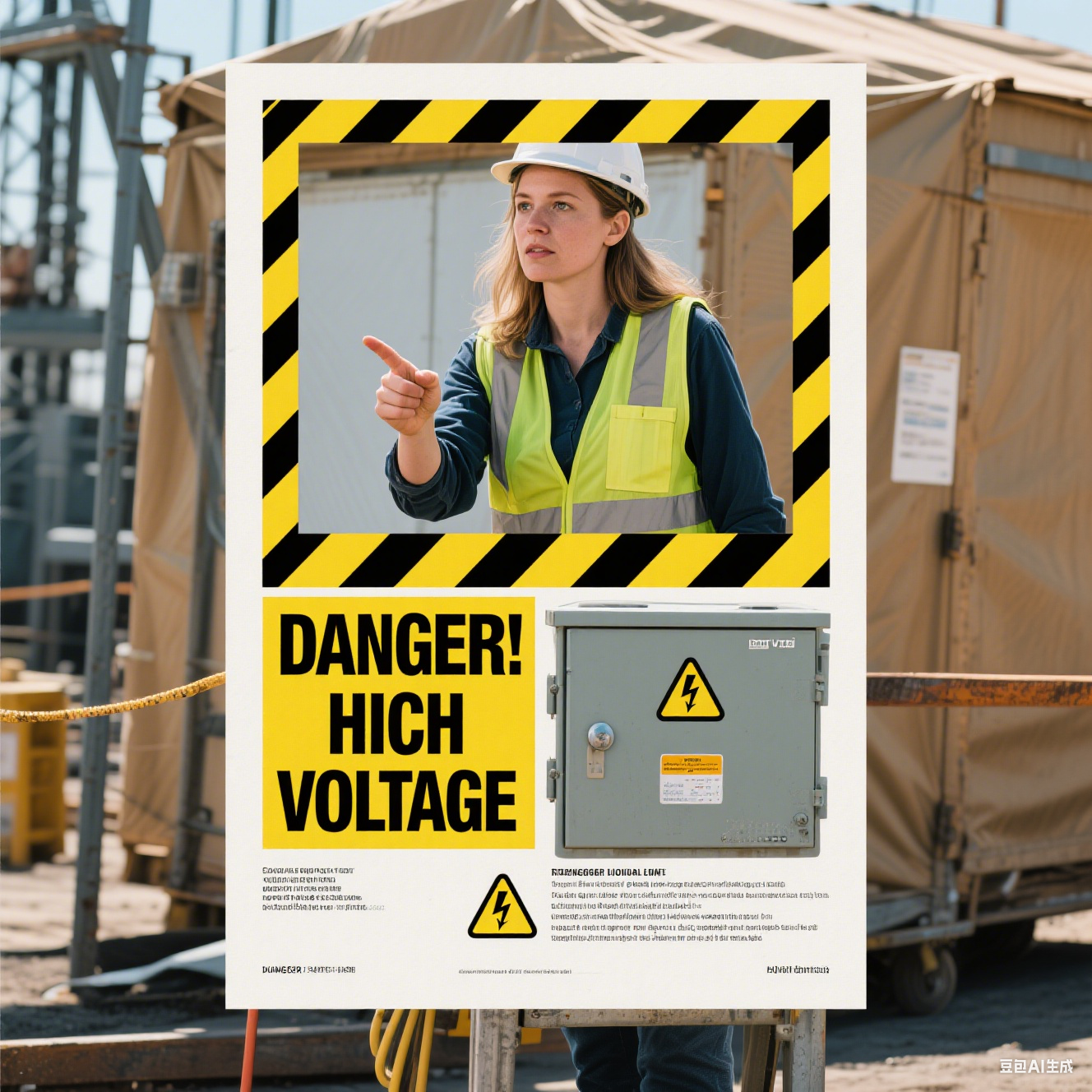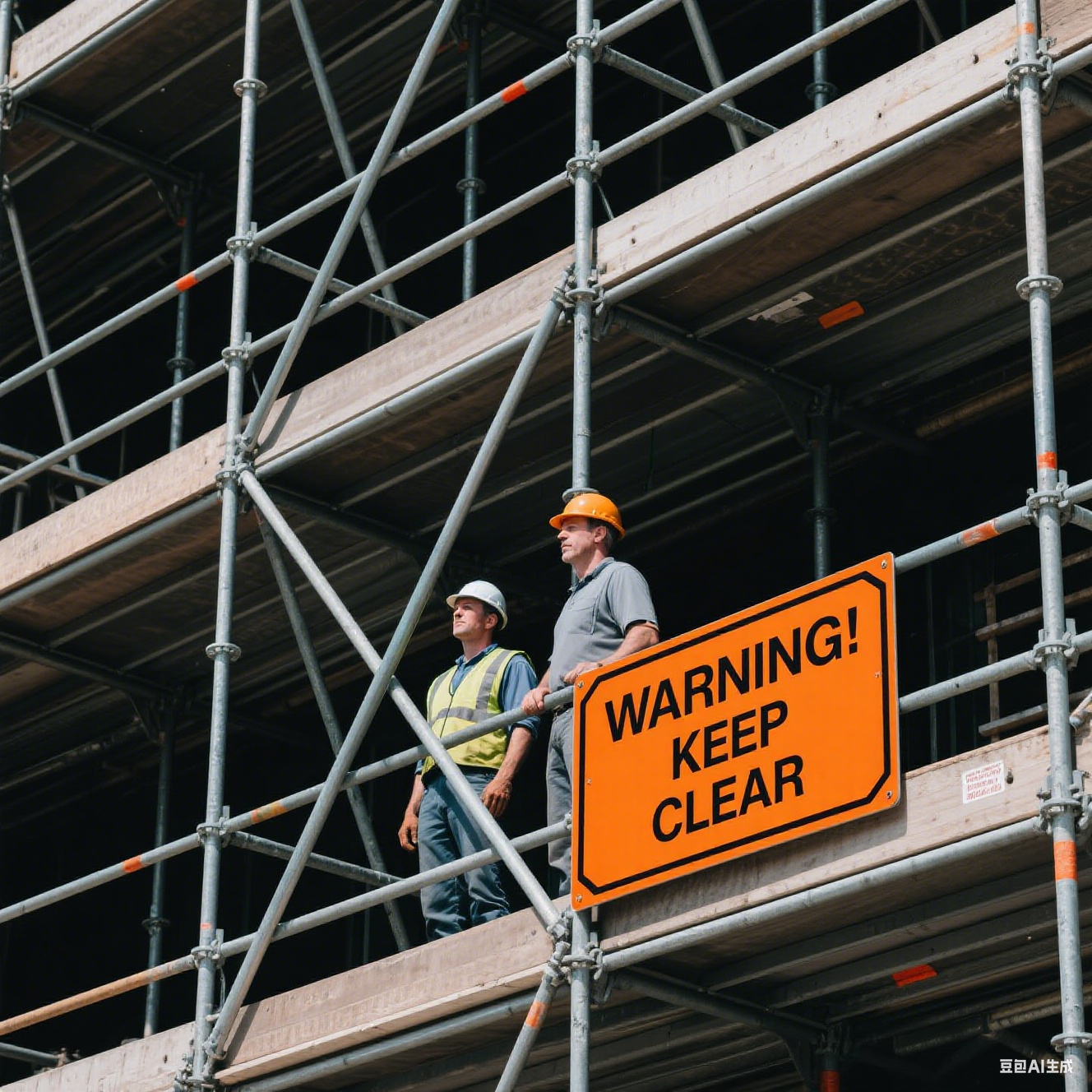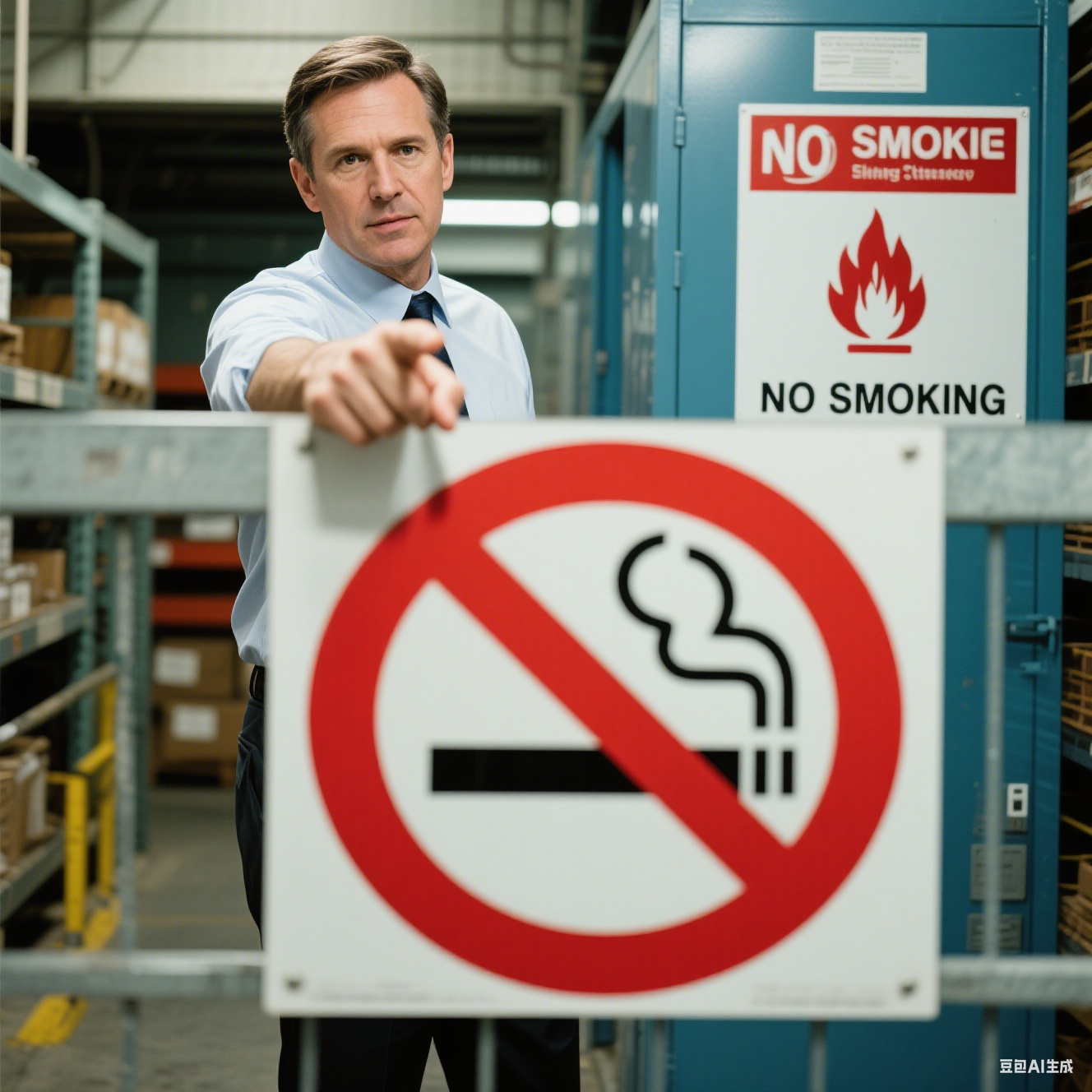
In the process of construction, safety is always the top priority. As an intuitive and convenient means of safety reminders, construction site safety stickers play an indispensable role in ensuring the safety of construction workers' lives and the smooth progress of projects. Below, we will comprehensively analyze the relevant knowledge of construction site safety stickers.
Which Core Areas of the Construction Site Must Mandatorily Post Safety Warning Stickers?
The construction site environment is complex and changeable, with many potential safety hazards. The following core areas must mandatorily post safety warning stickers to remind construction workers of safety at all times.
High - altitude Operation Areas
High - altitude operation areas are one of the high - risk areas for safety accidents on construction sites, with a great risk of falling from heights. When workers are working at heights, if the protective measures are not in place, such as not fastening safety belts, missing protective railings on scaffolding, etc., it is very easy to cause falling accidents. Therefore, mandatorily posting safety warning stickers in high - altitude operation areas can always remind workers to pay attention to their own safety, standardize their operation behaviors, and avoid accidents.
Temporary Electrical Boxes
Temporary electrical boxes are important facilities for power supply on construction sites, but they also have the risk of electric shock. If temporary electrical boxes have problems such as aging wires, poor grounding, and illegal wiring, it is very easy to cause electric shock to personnel. Mandatorily posting safety warning stickers can effectively warn people to use electricity standardizedly, not to touch or modify the electrical boxes at will, so as to avoid electric shock accidents.
Scaffold Edges
Scaffolds are commonly used facilities in construction, and their edges have the risks of falling and object strikes. If the protection at the scaffold edges is improper, such as damaged protective railings, loose pedals, etc., people may fall from the edges; at the same time, objects may fall from the edges during the operation, injuring people below. Therefore, posting safety warning stickers at the scaffold edges can remind workers to pay attention to the danger at the edges, take good self - protection, and also warn people below to stay away from the dangerous area.
Perimeter of Foundation Pits
The perimeter of foundation pits has the risks of collapse and falling. Because the excavation of foundation pits will damage the stability of the soil, the surrounding soil is prone to collapse under the influence of rain erosion, vibration and other factors; at the same time, when people are close to the edge of the foundation pit, they may accidentally fall due to carelessness. It is necessary to post safety warning stickers around the foundation pit to warn people to stay away from the dangerous area and prevent accidents.
Storage Points for Flammable and Explosive Materials
Storage points for flammable and explosive materials are major potential safety hazard areas on construction sites, which are prone to fire and explosion accidents. Flammable and explosive materials may cause serious safety accidents when exposed to fire sources, high temperatures, collisions, etc., resulting in casualties and property losses. Therefore, mandatorily posting safety warning stickers in this area, which strictly prohibit dangerous behaviors such as open flames and collisions, can effectively ensure the safety of the storage points.
What are the Core Differences Between the Four Types of Construction Site Safety Stickers Classified by Function: "Prohibitory", "Warning", "Mandatory", and "Informative"?
According to their functions, construction site safety stickers can be divided into "prohibitory", "warning", "mandatory" and "informative" types, which have obvious differences in functions and application scenarios.
"Prohibitory"
The core difference of "prohibitory" safety stickers is that they clearly prohibit certain dangerous behaviors and do not allow them to happen. Their purpose is to prevent behaviors that may cause safety accidents through mandatory regulations. Typical scenarios include "No Smoking" posted in areas such as storage points for flammable and explosive materials and near hot - work areas to prevent fires or explosions caused by fire sources from smoking; "No Trespassing" posted at the entrance of dangerous areas to prevent people from entering dangerous zones.
"Warning"
"Warning" safety stickers mainly remind people of potential dangers and require them to pay attention. Unlike "prohibitory" stickers that directly prohibit certain behaviors, they remind people to be vigilant and guard against possible dangers. Typical scenarios include "Caution: Falling" posted in high - altitude operation areas, scaffold edges, etc., to remind workers and passers - by to guard against the risk of falling; "Caution: Electric Shock" posted around temporary electrical boxes, etc., to warn people to pay attention to electrical safety and prevent electric shock.
"Mandatory"
The core of "mandatory" safety stickers is to require people to take certain safety measures or behaviors. They clearly stipulate the safety norms that people must abide by in specific environments to ensure the safety of themselves and others. Typical scenarios include "Must Wear Safety Helmet" posted at the entrance of the construction site, operation areas, etc., requiring people entering the area to wear safety helmets to prevent head injuries; "Must Fasten Safety Belt" posted in high - altitude operation areas, etc., forcing high - altitude workers to fasten safety belts to prevent falling.
"Informative"
"Informative" safety stickers mainly provide relevant safety information or guidance. Their role is to provide people with necessary safety information to help them understand the safety status of the surrounding environment and emergency measures, etc. Typical scenarios include "Safety Exit" posted at the exit of emergency evacuation channels to indicate the evacuation direction for people in emergency situations; "First - aid Point" posted in the medical first - aid area of the construction site, etc., to facilitate injured people to find the first - aid place in time.
What Special Material Requirements Do Safety Stickers Need to Meet Due to the Dusty, Rainy, and Sunny Environment of Construction Sites?
The construction site environment is relatively harsh, with a lot of dust, rain, and sunshine, which puts forward special requirements for the material of safety stickers.
Special Material Requirements
· Weather resistance: It can withstand various climatic conditions such as sunshine, rain, high temperature, and low temperature on the construction site, and is not easy to age or fade. The sun exposure, rain,and day - night temperature difference changes on the construction site will affect the stickers. Good weather resistance can ensure that the stickers remain clear and intact for a long time.
· Tear resistance: It is not easy to be torn and damaged when it may be collided or rubbed on the construction site. During the construction process, there are frequent comings and goings of personnel and equipment, and the stickers are inevitably collided and rubbed. Stickers with good tear resistance can avoid losing their warning function due to damage.
· Water and oil resistance: The construction site environment has a lot of dust, oil stains, and rain, so the stickers need to have water and oil resistance to keep clear. If the stickers are not water and oil resistant, they will become blurred after encountering rain and oil stains, and cannot play an effective warning role.
Reasons Why Ordinary Paper Stickers are Not Applicable
· Poor weather resistance: Ordinary paper stickers are easily affected by the climate in the harsh environment of the construction site, and will soon age, fade, and be damaged, unable to maintain the warning effect for a long time.
· Not water and oil resistant: Paper stickers are easily blurred or even damaged when exposed to water and oil stains, thus losing their warning function and failing to meet the needs of the construction site environment.
· Weak tear resistance: Ordinary paper materials have low strength and are easily damaged when subjected to external forces such as collision and friction, unable to ensure the integrity and durability of the stickers.

How to Determine the Posting Height and Angle of Construction Site Safety Stickers? Is it Necessary to Consider the Visual Blind Spots of Different Workers?
Reasonably determining the posting height and angle of construction site safety stickers, as well as considering the visual blind spots of different workers, is the key to ensuring that the stickers can be clearly seen and play a role.
Determination of Posting Height
· Standing operation areas: The height of the stickers should be within the range of the workers' line of sight at eye level or slightly lower, so that they can be seen quickly. When working while standing, workers' line of sight is usually at eye level or slightly lower. Posting the stickers in this range allows them to naturally see the content of the stickers during work and obtain safety information in a timely manner.
· Bending operation areas: The height of the stickers should be appropriately reduced to meet the line of sight range when working while bending. When working while bending, workers' line of sight will move downward, so it is necessary to reduce the height of the stickers accordingly to ensure that they can clearly see the stickers and avoid ignoring safety prompts due to sight problems.
Determination of Posting Angle
Ensure that the stickers are directly facing the main activity direction of the workers to reduce visual obstacles. This can ensure that workers can directly see the stickers during normal activities and operations without deliberately adjusting their line of sight, thereby improving the warning effect of the stickers. If the angle of the stickers is improper, they may be blocked by other objects or require workers to turn around deliberately to see, affecting the timeliness of the warning.
Consideration of Visual Blind Spots
For the working postures and activity ranges of different workers, avoid posting the stickers in visual blind spots to ensure that they can be clearly seen. Different workers have different working postures and activity ranges during work, which may have visual blind spots. For example, workers in some equipment operation positions may have specific visual blind spots due to the shielding of equipment. When posting stickers, it is necessary to fully consider these factors and post the stickers in positions that are easily visible to workers, avoiding being in visual blind spots and failing to play a role.
If There are Cross - National Construction Workers on the Construction Site, Do Safety Stickers Need to Include Multilingual Labels?
On construction sites with cross - national construction workers, safety stickers need to include multilingual labels.
Whether Multilingual Labels are Needed
Yes, in order to ensure that construction workers of different nationalities can understand the safety warning content, multilingual labels need to be included. Construction workers from different countries speak different languages. If safety stickers only use one language, some people may not understand their meaning, thus unable to effectively avoid risks. Multilingual labels can break down language barriers, allowing every construction worker to clearly understand the safety warning information and ensure their lives safety.
Common Supplementary Languages
· English: As an international universal language, it is a common supplementary language. In international projects, English is widely used, and many construction workers from different countries have a certain ability to understand English. Using English as a supplementary language can cover more cross - national construction workers.
· Spanish: It is more common in construction sites with more construction workers from Spanish - speaking countries. Spanish is widely used around the world, especially in some Latin American countries. Therefore, adding Spanish labels in construction sites with workers from these countries can better play the role of safety stickers.

How to Coordinate Safety Stickers with Other Safety Measures on the Construction Site? Is There a Risk of "Over - Reliance on Stickers and Neglect of On - Site Management"?
Safety stickers are an important part of construction site safety management, but they cannot replace other safety measures. They need to be coordinated with other safety measures, and at the same time, we should avoid over - relying on stickers and neglecting on - site management.
Coordination Methods
· Coordination with safety training: Safety stickers can be used as an intuitive display of training content to deepen workers' understanding of safety knowledge. In the process of safety training, explaining in combination with safety stickers can make workers more intuitively understand various safety risks and response measures, and improve their safety awareness and response capabilities.
· Coordination with on - site disclosure: During on - site disclosure, detailed explanations are given in combination with the content of the stickers to make workers clear about the matters needing attention. On - site disclosure is a safety explanation for specific operation tasks. Integrating the content of the stickers into it can make workers understand the relevant safety requirements while understanding the operation tasks, ensuring the safety of the operation process.
· Coordination with warning signs: Safety stickers and warning signs cooperate with each other to transmit safety information from different angles and distances. Warning signs are usually large in size and suitable for transmitting safety information from a long distance; while safety stickers are small in size and can be posted on specific equipment or areas for more detailed safety prompts. The combination of the two can form an all - round safety warning system.
Risk of Over - Reliance
If we over - rely on stickers and neglect on - site management and personnel supervision, it may lead to the ineffective implementation of safety measures and increase the risk of accidents. Safety stickers are only an auxiliary means of safety prompts, and they cannot guarantee that workers will abide by safety norms. If we only rely on stickers for safety management without strengthening on - site management and personnel supervision, workers may ignore the sticker prompts and operate in violation of regulations, thus causing safety accidents.
Avoidance methods: Take safety stickers as an auxiliary means, and at the same time strengthen on - site management and safety inspections. Through the inspection and supervision of on - site management personnel, timely correct the illegal behaviors of workers to ensure the effective implementation of various safety measures. Regularly check the integrity and effectiveness of safety stickers, replace damaged stickers in a timely manner, and constantly improve the on - site safety management system to form a multi - level safety guarantee.
Which "Hidden Risk Points" on the Construction Site are Easily Ignored but Need to Strengthen the Warning Role of Safety Stickers?
There are some "hidden risk points" on the construction site. These risk points are more likely to cause safety accidents because they are not eye - catching or easily ignored. Therefore, it is more necessary to strengthen the warning role of safety stickers.
Reserved Openings
Reserved openings are easily ignored, and people may accidentally fall. Reserved openings are usually temporarily left for subsequent construction. Due to their variable size and location, and sometimes may be covered by debris, they are easily ignored by workers. Posting eye - catching stickers such as "Caution: Falling" and "Watch Out for the Opening" around the reserved openings can always remind people to pay attention to the danger here and avoid accidental falling.
Temporary Cable Crossings
Risk characteristics: There are risks of tripping and electric shock, which are easily ignored by workers. When temporary cables cross the road, they may be laid on the ground. If there are no obvious warning signs, workers may be tripped by the cables during walking or operation, and there is also a risk of electric shock. Sticker reinforcement: Post stickers such as "Caution: Tripping" and "Watch Out for the Cable" to warn people to avoid and pay attention to their own safety.
Unfixed Edge Protection
Risk characteristics: The protection effect is unstable, prone to accidents, and its instability is easily ignored. Unfixed edge protection may move or topple due to external forces, losing its protective effect, but this instability is often easily ignored by workers. Sticker reinforcement: Post stickers such as "Unfixed Protection, Pay Attention to Safety" to remind people to pay attention to the protection status, avoid relying on or getting close to unfixed edge protection, and prevent accidents.

In conclusion, construction site safety stickers are an essential and effective tool in ensuring workplace safety. They serve as constant reminders in core risk areas, from high - altitude operation zones to storage points of flammable materials, helping to prevent accidents. The different types of stickers, namely prohibitory, warning, mandatory, and informative, each have their unique roles in guiding behavior and conveying risks.



